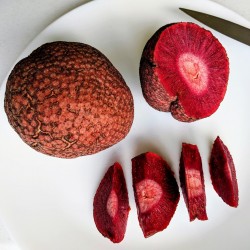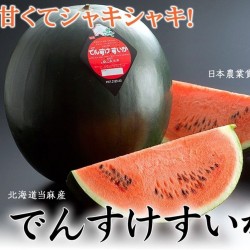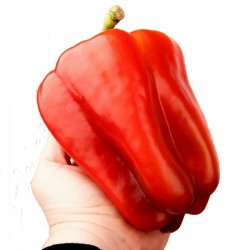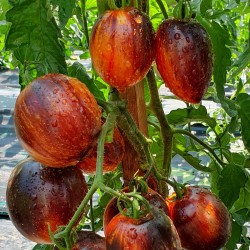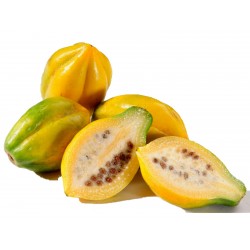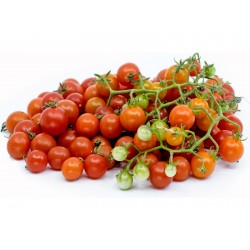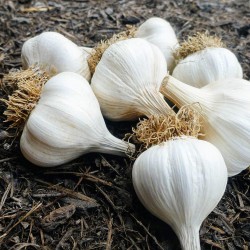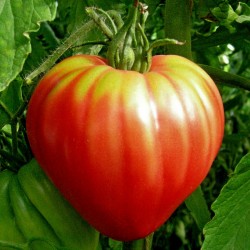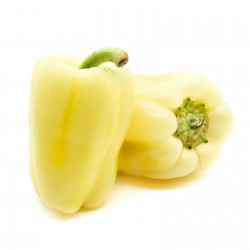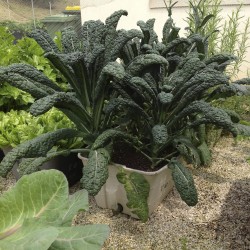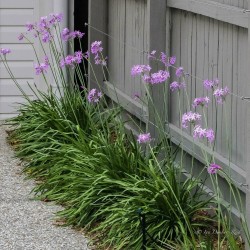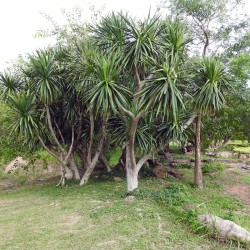
Thai Dragon Tree Seeds...
Price
€3.50
SKU: T 96
Seeds Gallery Com,
5/
5
<h2><strong>Thai Dragon Tree Seeds (Dracaena cochinchinensis)</strong></h2>
<h2><span style="color: #ff0000;"><strong>Price for Package of 5 seeds.</strong></span></h2>
<p>Thai Dragon Tree is a beautiful, very robust species native from southern Yunnan and southwestern Guangxi in China to Thailand and Laos, where it grows on rugged limestone cliffs.</p>
<p>It is quick and easy growing and forms a sturdy, forking trunk with neat crowns of straplike, elegantly recurving green leaves. It has similarities to Dracaena draco, the Canary Island Dragon Tree, but is smaller and more elegant in overall appearance.</p>
<p>WIKIPEDIA<br />Dracaena cochinchinensis, the Cochinchinese dragon tree, is a monocotyledonous tree plant of the family Liliaceae (or Dracaenaceae) according to the classical classification.</p>
<p>This species is native to Vietnam, Cambodia, Laos and southern China (Yunnan, Guangxi).</p>
<p>From any incision or wound flows a blood-red resin, known as dragon's blood in traditional pharmacopoeias, similar to that obtained with the dragon trees Dracaena draco from the Canary Islands and Dracaena cinnabari from the island of Socotra. China, which imported dragon's blood from abroad, discovered in 1972 that there were dragon trees on its territory capable of providing it with the precious materia medica1.</p>
<p>The species is now endangered in China but is cultivated there for dragon's blood production.</p>
<p>Dracaena cochinchinensis is a monocotyledonous tree plant 5 to 10 meters high.</p>
<p>The branched stems have a reddish tip, with shorter than wide internodes, a smooth greyish-white bark, darkening with age.</p>
<p>The leaves collected at the end of the branches, are sessile, sword-shaped, 30−100 x 2−5 cm, with a reddish base completely enclosing the internode.</p>
<p>The terminal inflorescence, in panicle, is more than 40 cm, with a densely pubescent rachis.</p>
<p>The flowers collected by 2-5, have a milky white perianth, formed of a tube of 1.5−2 mm and 6 lobes of 5−6 mm.</p>
<p>The fruit is an orange berry.</p>
<p>It is found between 900 and 1,700 m on limestone cliffs, sunny, in tropical regions. It resists drought well.</p>
<p>Pharmacology<br />Chemical constituents of dragon's blood<br />The chemical constituents of dragon's blood from the Cochinchinese dragon tree are primarily flavonoids and then terpenoids, steroids, saponins and phenolic compounds.</p>
<p>Among the flavonoids, it has been isolated chalcones (2,4,4'-trihydroxychalcone, loureirin A, B and C etc.), dihydrochalcones, flavanones, flavans, polymeric flavonoids and chromogenic ketones6. Then, terpenes, steroids, steroidal saponins as well as phenolic compounds and lignans were isolated.</p>
<p>In China, several teams of researchers are studying the chemical composition and pharmacology of the dragon's blood of the Dracaena cochinchinensis, openly following on from the multi-millennium studies of the Chinese pharmacopoeia. Fan and als6 (2014) made a detailed review of 63 works published in China from which we will extract a few examples.</p>
<p>Huang et al.13 (1994) show that dragon's blood inhibits experimental arterial thrombosis by facilitating blood circulation and dispersing blood stasis. According to Nong et als.14 (1997), dragon's blood also has a hemostatic effect since they experimentally showed that it can reduce the blood clotting time of mice. Other studies have shown that dragon's blood can significantly lower the blood glucose level of hyperglycemic mice (Zhang et als, 2002), inhibit the growth of Staphylococcus aureus, Diphteria bacilli and Bacillus anthracis (Chen et als. , 1999), stimulate tissue repair. For this purpose, Liu et als15 implanted a tissue of human keratocytes on the injured skin of mice. The group that received oral and external treatment with dragon's blood showed increased development of the transplanted epidermis, proliferation of capillaries in the dermis and increased secretion of collagen.</p>
<p>Many of the studies cited do not, however, provide many guarantees of validity. Many are not randomized, double-blind studies. They only suggest possible analgesic or anti-diabetic effects.</p>
<p>Clinical studies<br />A randomized, double-blind study evaluated the effectiveness of dragon's blood capsules against angina pectoris (angina pectoris). The group that received the treatment saw that their electrocardiograms (ECGs) improved significantly compared to the control group16.</p>
<p>Culture<br />The Cochinchina dragon tree is grown as an ornamental plant in gardens in tropical regions.</p>
<p>It can also be grown in a pot indoors or under a veranda.</p>
T 96






